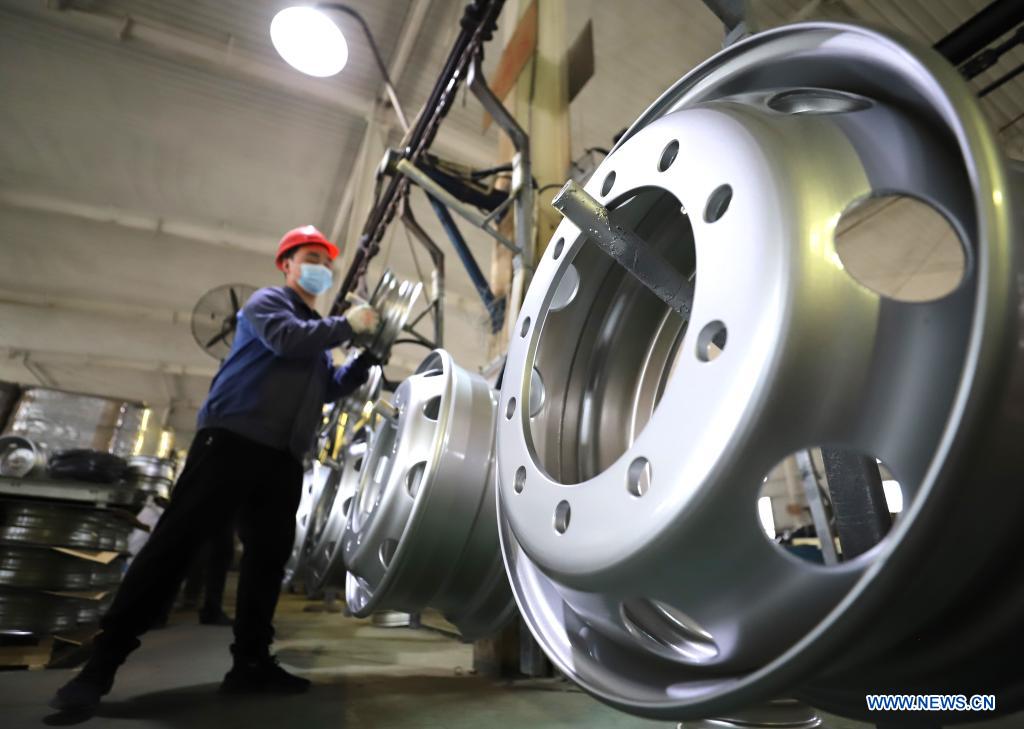Record Q1 growth to fuel strong global expansion


In the first quarter of 2020, China's economy contracted by 6.8 percent because of the impact of the novel coronavirus pandemic. In the West, it was widely seen as the "end of China's growth story".
But in contrast to that popular perception, in early February 2020, I predicted a relative decline in new COVID-19 infections in China and the beginning of the country's economic rebound in the second quarter. Indeed, following the 6.5 percent economic growth in the fourth quarter of 2020, the GDP increased a record 18.3 percent year-on-year in the first quarter of this year.
True, the economic performance benefited from the low year-on-year base effect, nevertheless, it reflects a strong impetus for normalization.
Expansive momentum from manufacturing to services
The strategic rebound effort began with supply-side expansion. Now, it is broadening, thanks to improving domestic demand and higher exports. All major indicators are already above the pre-crisis level.
The purchasing managers' index (PMI) has been rising 13 months in a row, with production of machineries and healthcare-related products continuing to show strong growth. And as the supply-side performance is driving the turnaround in consumption, even the services' PMI has been expanding for almost a year.
With the easing of social distancing measures, retail sales, which have been expanding for eight months, are likely to strengthen.
Besides, because of new variants of the virus and lingering pandemic waves in many parts of the world, international travel restrictions are likely to foster domestic spending on the Chinese mainland.
After the severe pandemic-induced economic plunge, the international auto sector is recovering, with retail sales in the United States rising 26 percent in the first quarter. However, China's auto production has increased for 12 months at more than 40 percent year-on-year.
Exaggerated concern over monetary tightening
Last year, China's performance relied on fiscal and monetary support, while a surge of debt sparked unease among some observers. With the economic recovery, however, government authorities have urged banks to shun disproportionate lending growth. Still, concerns over monetary tightening seem overblown.
In line with its normalization objectives, China's central bank seeks to cool credit growth to preempt debt and financial risks. But it is moving cautiously, in order not to disrupt the recovery. Moreover, inflation has strengthened and been in positive territory since March, and the country's gradual financial integration with the global markets is supporting its domestic momentum.
In particular, Chinese government bonds are growing in popularity across global fixed income portfolios. In just two years, foreign holdings of such bonds have nearly doubled to almost $310 billion.
Despite the US administration's geopolitical efforts to contain China, US investors seek steadiness and diversification through the Chinese government bonds' high and stable yield-China's 10-year bonds have yields over 3.2 percent while the US' 10-year Treasury yield is at 1.7 percent.
This is just a prelude. Over the next 20 months, more than 360 onshore Chinese bonds will be added to major investment indexes tracked by global investors. The full inclusion is projected to attract about $150 billion of foreign inflow into China's $13 trillion bond market-the third-largest in the world, after the US and Japan.
This huge inflow will support the yuan, even as China's current account surplus is shrinking.
With increasing investment by both private and State-owned enterprises, public investment will rise faster, thanks to the push under the 14th Five-Year Plan (2021-25). Gradually, that investment will shift from manufacturing and real estate, which fueled China's old growth model, toward research and development, as the new growth model takes hold. The latter, in turn, is accelerating due to the rapid expansion of China's "Silicon Valley": the Guangdong-Hong Kong-Macao Greater Bay Area.
As China has begun the transition to higher value added, parts of the cost-focused supply chains centered on the mainland are relocating to Southeast Asia, which is likely to boost regional integration under the Regional Comprehensive Economic Partnership. That's a market-led regional win-win for economic development, despite the ongoing geopolitical attempts to split Asia.
Global recovery or worldwide divisions
The key international uncertainty involves the question whether the US will put global interdependency-cooperation in climate change and international trade and investment-ahead of the divide-and-rule geopolitics against multiple major economies.
The implications will not reverberate only outside the US. Economic instability and geopolitical tensions have the potential to derail the Biden administration's own domestic programs, which rely on huge debt-taking, multi-trillion-dollar stimulus packages, continuous monetary easing, and what Democratic economist Paul Krugman has termed "super-core inflation amid a year of bottlenecks and blips".
With progressive normalization and relative international stability, China's expansion momentum will steady toward the end of this year, while the strong rebound will allow it to exceed the 2021 growth target of "above 6 percent".
GDP growth could exceed 6.5 percent
Even with moderation, China's GDP growth is likely to exceed 6.5 percent and has the potential to be between 8.5 percent and 9.5 percent, likely slowing to 6 percent or so in 2022. If the peaceful development of the Asia-Pacific region continues, China's GDP is on track to surpass the US', making China the world's largest economy in the late 2020s. And thanks to global interdependency, such expansion can support both the US and global economic prospects.
In short, China's record GDP growth in the first quarter of this year will accelerate the economic momentum in China and support the recovery of the US and global economies as well-as long as unwarranted geopolitical tensions remain in check.
The author is the founder of Difference Group, and has served at the India, China and America Institute (USA), Shanghai Institutes for International Studies (China) and the EU Centre (Singapore).
The views don't necessarily reflect those of China Daily.


































